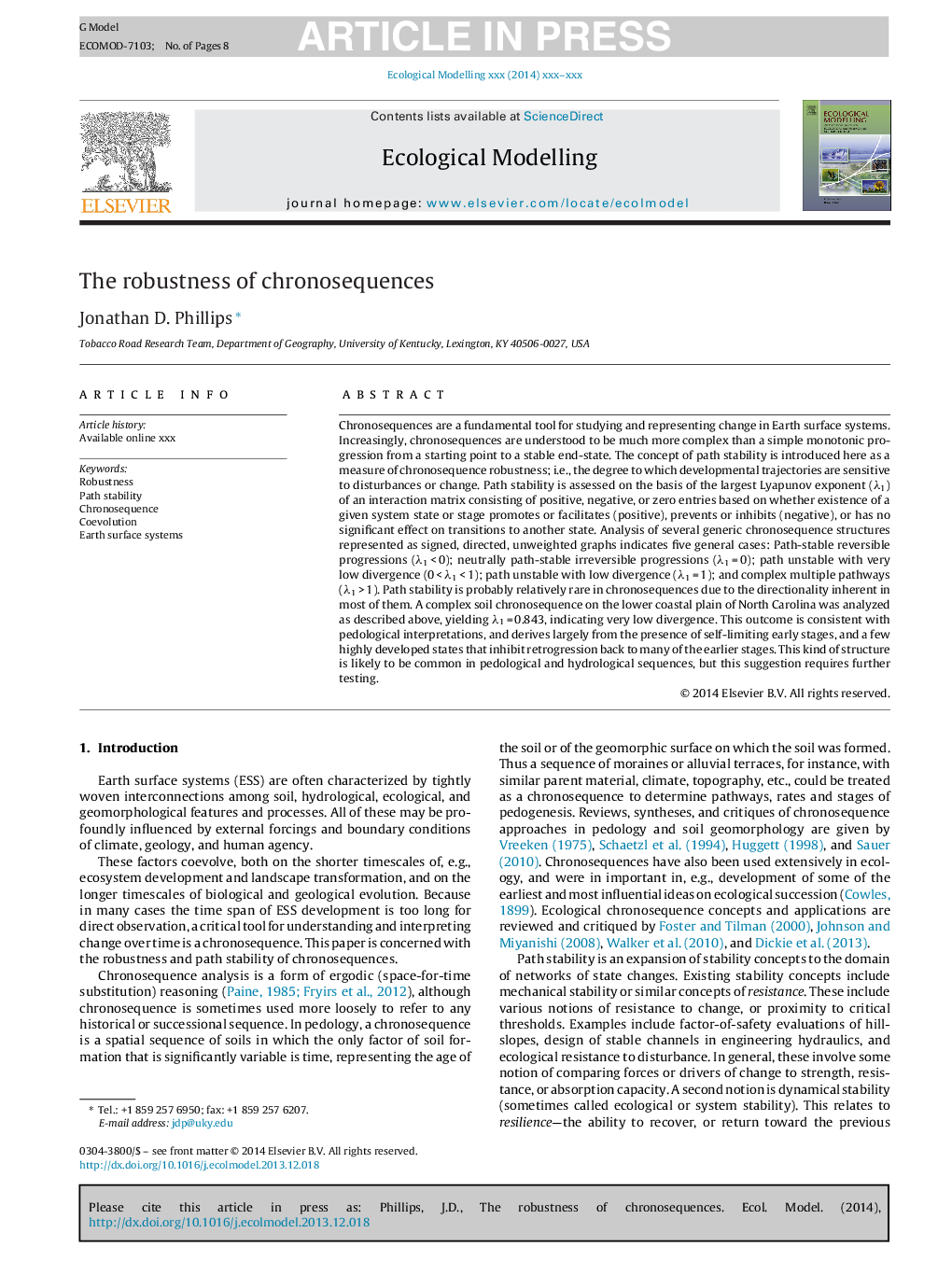| کد مقاله | کد نشریه | سال انتشار | مقاله انگلیسی | نسخه تمام متن |
|---|---|---|---|---|
| 6296681 | 1617448 | 2015 | 8 صفحه PDF | دانلود رایگان |
عنوان انگلیسی مقاله ISI
The robustness of chronosequences
ترجمه فارسی عنوان
استحکام کروموزوم ها
دانلود مقاله + سفارش ترجمه
دانلود مقاله ISI انگلیسی
رایگان برای ایرانیان
موضوعات مرتبط
علوم زیستی و بیوفناوری
علوم کشاورزی و بیولوژیک
بوم شناسی، تکامل، رفتار و سامانه شناسی
چکیده انگلیسی
Chronosequences are a fundamental tool for studying and representing change in Earth surface systems. Increasingly, chronosequences are understood to be much more complex than a simple monotonic progression from a starting point to a stable end-state. The concept of path stability is introduced here as a measure of chronosequence robustness; i.e., the degree to which developmental trajectories are sensitive to disturbances or change. Path stability is assessed on the basis of the largest Lyapunov exponent (λ1) of an interaction matrix consisting of positive, negative, or zero entries based on whether existence of a given system state or stage promotes or facilitates (positive), prevents or inhibits (negative), or has no significant effect on transitions to another state. Analysis of several generic chronosequence structures represented as signed, directed, unweighted graphs indicates five general cases: Path-stable reversible progressions (λ1 < 0); neutrally path-stable irreversible progressions (λ1 = 0); path unstable with very low divergence (0 < λ1 < 1); path unstable with low divergence (λ1 = 1); and complex multiple pathways (λ1 > 1). Path stability is probably relatively rare in chronosequences due to the directionality inherent in most of them. A complex soil chronosequence on the lower coastal plain of North Carolina was analyzed as described above, yielding λ1 = 0.843, indicating very low divergence. This outcome is consistent with pedological interpretations, and derives largely from the presence of self-limiting early stages, and a few highly developed states that inhibit retrogression back to many of the earlier stages. This kind of structure is likely to be common in pedological and hydrological sequences, but this suggestion requires further testing.
ناشر
Database: Elsevier - ScienceDirect (ساینس دایرکت)
Journal: Ecological Modelling - Volume 298, 24 February 2015, Pages 16-23
Journal: Ecological Modelling - Volume 298, 24 February 2015, Pages 16-23
نویسندگان
Jonathan D. Phillips,
